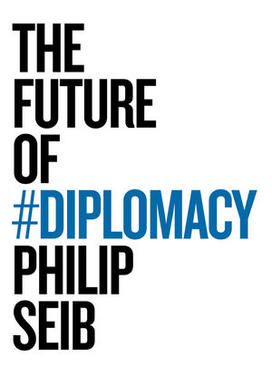Phil Seib ’70 Maps the Intersection of Social Media and Diplomacy

The book: Just as the rapid changes in technology and the rise of social media have changed how businesses operate, diplomacy, too, is changing quickly. “Public” diplomacy has replaced the elite dealings of the past as diplomats must now face a public that is better informed and more vocal than ever before.
In his new book, The Future of Diplomacy (Wiley), media and foreign-policy expert Philip Seib ’70 discusses the new diplomacy in the Age of the Internet. He shows how diplomatic practice has pivoted from the top-level, closed-door negotiations to being expected to respond instantly to the latest Facebook-post or YouTube-video crisis. He argues that these worldwide social-media outlets have created a more open and reactive approach to global problem solving, but warns they also can have unpredictable consequences. Still, Seib argues in favor of this new, public-facing diplomacy that manages the increasingly complex relations between states and their constituents in the 21st century.

Opening lines: “For centuries, diplomacy was the domain of an insular elite. The protagonists worked quietly, often secretly, until ready to unveil their accomplishments or lack thereof. Diplomats were comfortable in this closed environment, speaking just to one another and paying little heed to those publics whose future might be shaped by their work. British diplomat Harold Nicholson, in his 1939 book Diplomacy, wrote, ‘In the days of the old diplomacy it would have been a remarkable act of vulgarity to appeal to the common people upon any issue of international policy.’… Today Nicholson’s ‘unthinkable’ vulgarity has become integral to diplomacy.”
Reviews: Former under secretary of state Tara Sonenshine says, “Seib delivers a stimulating and exciting book that invites dialogue about diplomacy, social media, and the public square … A must-read for those interested in the intersection of media and diplomacy.”











No responses yet